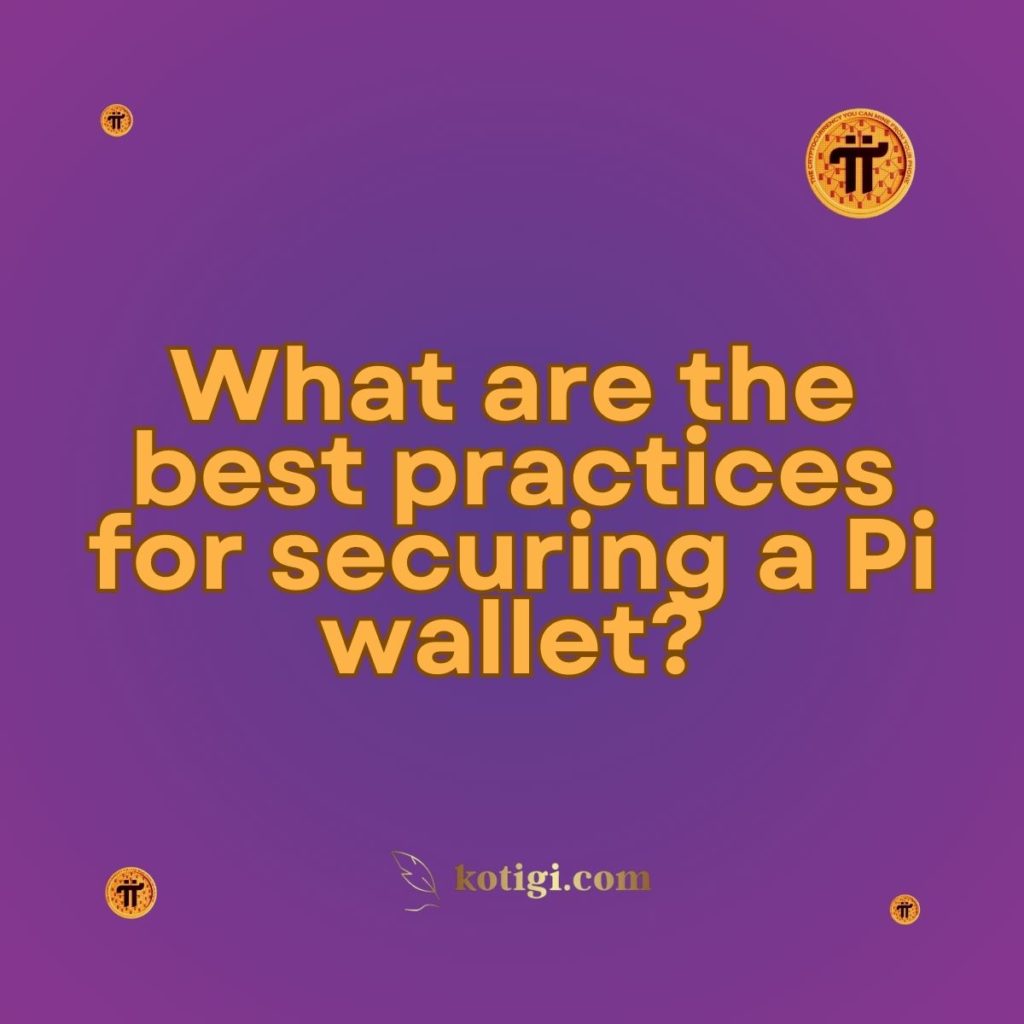
What are the best practices for securing a Pi wallet?
To ensure the safety of your Pi wallet, it’s essential to follow best practices such as enabling two-factor authentication, using strong passwords, backing up your wallet, and being cautious with phishing attempts.
Introduction
In the world of cryptocurrencies, securing your digital assets is paramount. Pi Network offers its users a unique way to mine and hold Pi coins, but with this opportunity comes the responsibility of safeguarding those assets. This article will delve into the best practices for securing a Pi wallet, providing essential tips and strategies to protect your investments from potential threats.
1. Understanding the Importance of Wallet Security
1.1 What is a Pi Wallet?
A Pi wallet is a digital storage space where users can keep their Pi coins, which are earned through the Pi Network’s mining process. Like other cryptocurrency wallets, it allows users to send, receive, and manage their coins securely.
1.2 Why Security Matters
The security of your Pi wallet is crucial because it contains your digital assets. Any vulnerability could lead to unauthorized access and loss of funds. Given that cryptocurrencies are irreversible, once funds are lost or stolen, they cannot be retrieved.
1.3 Common Threats to Wallet Security
- Hacking: Malicious actors may try to exploit weaknesses in the wallet software.
- Phishing: Users may be tricked into providing their credentials through deceptive communications.
- Malware: Infected devices can compromise wallet security by capturing sensitive information.
2. Choosing the Right Wallet Type
2.1 Hot Wallets vs. Cold Wallets
Hot wallets are connected to the internet and offer convenience for transactions but are more susceptible to attacks. Cold wallets, on the other hand, are offline storage options that provide better security for long-term holdings.
2.2 Multi-Signature Wallets
Multi-signature wallets require multiple private keys to authorize a transaction, adding an extra layer of security. This is particularly useful for users who want to protect their funds from unauthorized access.
2.3 Hardware Wallets
Hardware wallets are physical devices that store private keys offline. They are considered one of the safest options for storing cryptocurrencies, including Pi coins, as they are immune to online threats.
2.4 Assessing Wallet Features
When selecting a wallet, consider features such as user-friendliness, security options, and backup capabilities. A wallet should offer the right balance between convenience and security.
2.5 Popular Wallet Options for Pi Users
Research and evaluate wallet options that specifically support Pi coins. Look for wallets that have received positive reviews from the community regarding their security measures.
3. Enabling Two-Factor Authentication (2FA)
3.1 What is 2FA?
Two-Factor Authentication (2FA) adds an additional layer of security by requiring two forms of verification before accessing your wallet. This usually involves something you know (a password) and something you have (a mobile device).
3.2 How to Enable 2FA on Your Pi Wallet
Most wallet platforms provide an option to enable 2FA in the security settings. Follow the instructions provided to link your wallet to an authentication app or receive SMS codes.
3.3 Benefits of Using 2FA
- Increased Security: Even if your password is compromised, unauthorized users will not gain access without the second form of verification.
- Peace of Mind: Knowing that an extra layer of security is in place can help users feel more secure about their digital assets.
3.4 Common 2FA Methods
Consider using authenticator apps like Google Authenticator or Authy for more secure verification methods than SMS, which can be vulnerable to interception.
4. Creating Strong and Unique Passwords
4.1 Characteristics of a Strong Password
A strong password typically includes a mix of uppercase and lowercase letters, numbers, and special characters. Avoid using easily guessable information like birthdays or common words.
4.2 Password Managers
Utilizing password managers can help generate and store complex passwords securely. These tools can simplify the process of managing multiple passwords without compromising security.
4.3 Avoiding Common Password Pitfalls
Do not reuse passwords across different platforms, as this increases vulnerability. Regularly update passwords to enhance security, especially if a breach is reported on a service you use.
4.4 Implementing Password Recovery Measures
Ensure that you have recovery options set up in case you forget your password. This might include security questions or secondary email accounts for verification.
5. Backing Up Your Wallet
5.1 Importance of Wallet Backups
Regular backups of your wallet are essential to safeguard your funds against device loss or corruption. Backing up ensures that you can restore access to your Pi coins if necessary.
5.2 How to Back Up Your Pi Wallet
Follow the instructions provided by your wallet service to create backups. This often involves exporting a recovery phrase or saving private keys securely.
5.3 Restoring Your Wallet from Backup
In the event of loss or damage to your wallet, you can restore it using the backup files or recovery phrase you have saved. Always ensure that you follow the restoration instructions carefully.
5.4 Secure Storage for Backups
Store backup information in a secure location, such as a safe or an encrypted USB drive. Avoid keeping backups on devices connected to the internet to minimize exposure to potential threats.
6. Staying Vigilant Against Phishing Attacks
6.1 What is Phishing?
Phishing is a fraudulent attempt to obtain sensitive information by disguising as a trustworthy entity. Attackers often use emails, texts, or websites to trick users into providing personal information.
6.2 Recognizing Phishing Attempts
Be cautious of unsolicited communications that ask for sensitive information. Check the sender’s email address, and look for misspellings or suspicious links before clicking.
6.3 Reporting Phishing Attacks
If you encounter phishing attempts, report them to the appropriate authorities or the Pi Network support team. This helps protect the community from similar attacks.
6.4 Educating Yourself About Common Tactics
Stay informed about common phishing tactics and scams in the cryptocurrency space. Awareness can empower you to avoid falling victim to these malicious schemes.
6.5 Practicing Caution with Public Wi-Fi
Avoid accessing your wallet or entering sensitive information when connected to public Wi-Fi networks, as they can be easily intercepted by attackers.
Conclusion
Securing your Pi wallet is an ongoing process that requires vigilance and awareness. By implementing these best practices, you can significantly reduce the risk of unauthorized access to your digital assets and ensure that your Pi coins remain safe.
Key Takeaways
| Key Takeaway | Details |
|---|---|
| Understanding Wallet Types | Different wallet types offer varying levels of security; choose one that fits your needs. |
| Enable Two-Factor Authentication | Adding 2FA increases your wallet’s security significantly. |
| Create Strong Passwords | Utilize complex and unique passwords to protect your wallet from unauthorized access. |
| Regular Backups are Crucial | Backing up your wallet ensures you can recover your funds in case of loss or damage. |
| Be Aware of Phishing Attempts | Stay vigilant against phishing scams to protect your sensitive information. |
| Educate Yourself on Security Practices | Continuous learning about security will help you stay one step ahead of potential threats. |





